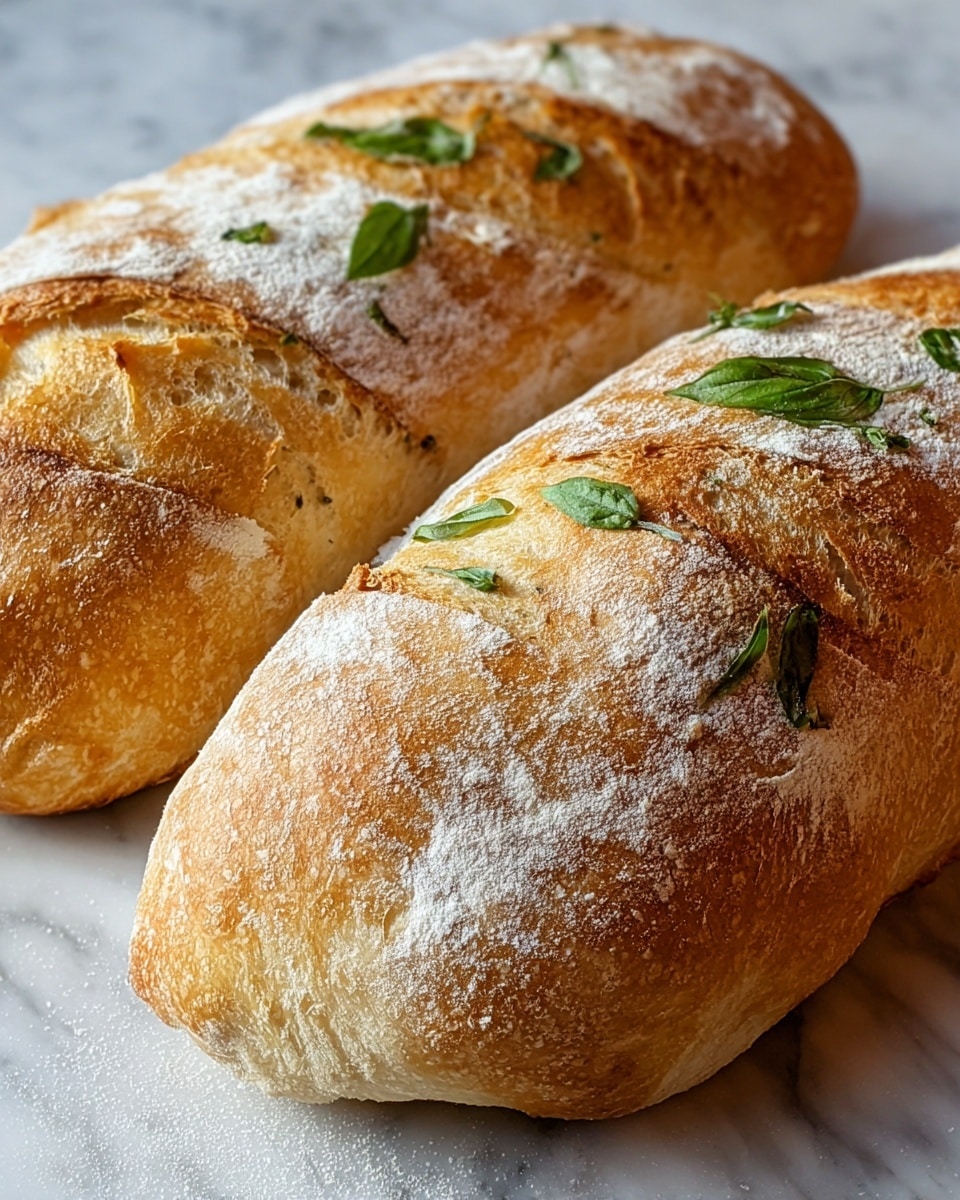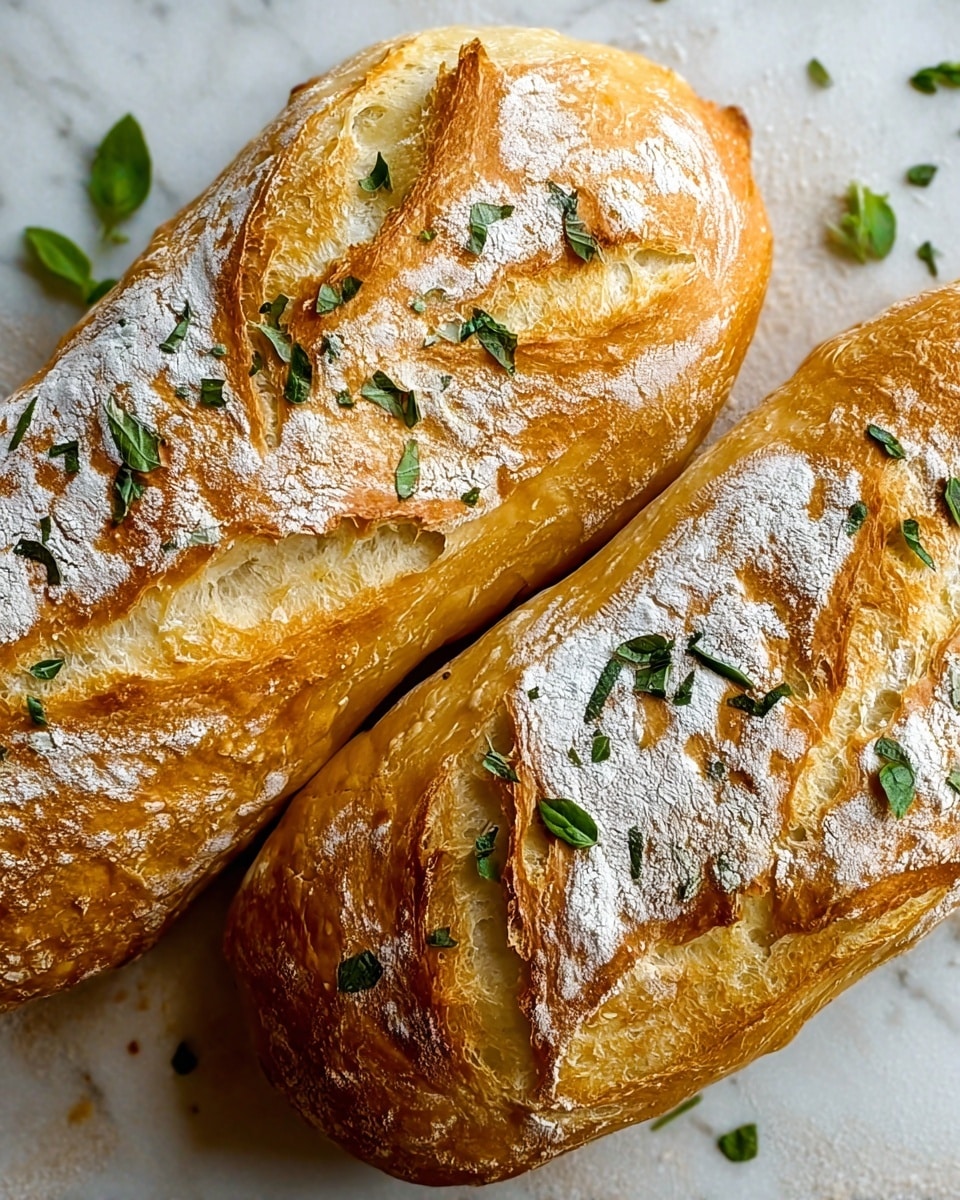Crusty Italian Bread Recipe
If you’ve ever dreamed of making bakery-quality bread at home with a delightfully crackling crust and a soft, airy crumb inside, this Crusty Italian Bread Recipe is just the ticket. It’s a classic, rustic loaf that captures the heart of Italian baking tradition, combining simple, wholesome ingredients with straightforward techniques to create a loaf you’ll be proud to serve again and again. Perfect with everything from soups to sandwiches, this bread promises that enchanting crunch followed by a tender bite that keeps you coming back for more.

Ingredients You’ll Need
One of the best things about this Crusty Italian Bread Recipe is how few ingredients you need; each one plays a starring role in building flavor, texture, and that iconic crust. From the yeast that gives life to the dough, to the salt that enhances flavor, every component matters.
- 4 cups all-purpose flour: The foundation of the dough providing structure and elasticity.
- 1 1/2 teaspoons salt: Balances and brightens the bread’s flavor beautifully.
- 1 packet (2 1/4 teaspoons) active dry yeast: The magic that ferments the dough and creates those airy bubbles inside.
- 1 1/2 cups warm water (about 110°F): Activates the yeast and hydrates the flour to form the perfect dough consistency.
- 1 tablespoon olive oil (optional for brushing): Adds a subtle richness and helps develop a golden crust.
- Cornmeal or flour for dusting: Prevents sticking and contributes a nice texture on the bottom crust.
How to Make Crusty Italian Bread Recipe
Step 1: Activate the Yeast
Begin by dissolving your yeast in warm water, around 110°F, and let it bloom for 5 to 10 minutes until it becomes foamy. This step ensures your yeast is fresh and lively, setting the stage for a beautiful rise.
Step 2: Mix the Dough
Next, sprinkle in the salt and slowly incorporate the flour. Stir gently until you have a shaggy mixture—a telling sign that the dough is coming together but still needs a little TLC.
Step 3: Knead to Perfection
Flour your work surface, turn out the dough, and knead for about 8 to 10 minutes. You’ll feel the texture change, becoming smoother and wonderfully elastic, which means gluten is developing nicely for that perfect bread structure.
Step 4: First Rise
Place your dough in a lightly oiled bowl, cover it, and let it rest in a warm, draft-free spot. In about 1 to 1 1/2 hours, the dough should double in size, becoming airy and soft—a sure sign it’s ready for the next step.
Step 5: Shape the Loaf
Punch down the dough gently to release trapped gases. Then shape it into a round or oval loaf—the classic forms that lend this bread its rustic charm. Place on a baking sheet dusted with cornmeal or flour to avoid sticking.
Step 6: Second Rise
Cover the loaf again and let it rise for another 30 to 45 minutes. The dough will puff up further, making it light and airy inside with an inviting exterior.
Step 7: Prepare to Bake
Preheat your oven to 450°F and position a pan filled with water on the lowest rack. This steam creates the ideal environment to develop that iconic crusty exterior that defines this bread perfectly. Using a sharp knife, slash the top of your loaf a few times to provide room for expansion during baking.
Step 8: Bake
Bake your bread for 25 to 30 minutes until the crust turns a deep, golden brown and the loaf sounds hollow when tapped. This is the unmistakable sign of a crusty Italian bread done just right.
Step 9: Cool and Enjoy
Let your bread cool on a wire rack before slicing—it’s tempting to cut in right away, but the cooling helps the crumb set and stops the bread from becoming gummy inside.
How to Serve Crusty Italian Bread Recipe

Garnishes
While crusty Italian bread shines on its own, a light brush of olive oil or a sprinkle of flaky sea salt takes it to the next level. Fresh herbs or garlic-infused oil drizzles make wonderful accents that complement the bread’s natural flavor.
Side Dishes
This bread pairs like a dream with hearty soups such as minestrone or tomato basil, and also shines alongside charcuterie boards featuring cheeses, olives, and cured meats. Its crust and crumb provide the perfect vehicle for soaking up rich sauces or simply enjoying with good butter.
Creative Ways to Present
Try slicing your crusty loaf to create crostini topped with tomato bruschetta or melting your favorite cheese on thick slices for a cozy open-faced sandwich. You can even hollow out a section to use as a rustic bowl for dips or stews—the possibilities are endless and always delicious.
Make Ahead and Storage
Storing Leftovers
Crusty bread is best enjoyed fresh, but if you have leftovers, store them wrapped loosely in a paper bag inside a bread box or at room temperature. This keeps the crust crispier than plastic wrapping, which tends to soften it.
Freezing
If you want to save bread for longer, wrap it tightly in plastic wrap and then foil before freezing. When you’re ready to enjoy, thaw at room temperature for a few hours and then reheat to revive the texture.
Reheating
To bring back that irresistible crust, pop your bread in a preheated oven at 350°F for about 10 minutes. For an extra crunch, spritz the oven walls lightly with water just as you put the bread in, mimicking the original steaming process.
FAQs
Can I use bread flour instead of all-purpose flour?
Absolutely! Bread flour will give you a chewier, more elastic crumb due to its higher protein content, which some bread lovers prefer. The Crusty Italian Bread Recipe works perfectly with either type of flour.
Why is it important to have steam in the oven when baking this bread?
Steam keeps the crust from hardening too quickly while the bread rises in the oven, allowing for a glossy, blistered, and delightfully crisp crust. It’s a critical step to achieving that authentic bakery-style crust.
Do I have to let the bread cool before slicing?
Yes, letting the bread cool completely prevents the crumb from becoming gummy and ensures cleaner slices. Patience here will reward you with the perfect texture every time.
What if my dough doesn’t rise properly?
If your dough hasn’t doubled after an hour or so, it could be due to inactive yeast or temperatures that are too cool or too hot. Make sure your water is warm but not scalding and check that your yeast is fresh and active.
Can I make this recipe without the olive oil?
Yes, the olive oil is optional and primarily adds a subtle richness and helps with the crust color. Your Crusty Italian Bread Recipe will still turn out beautifully without it.
Final Thoughts
There’s something truly special about pulling a warm, crusty loaf from the oven that you made yourself. This Crusty Italian Bread Recipe invites you into a world where simple ingredients and a little patience create magic. Whether you’re a seasoned baker or just starting out, give this recipe a try—you’ll be amazed at how satisfying homemade bread can be, and it’s a wonderful way to bring a little Italian charm right into your kitchen.
Print
Crusty Italian Bread Recipe
- Total Time: 2 hours 15 minutes
- Yield: 1 loaf (about 8 slices) 1x
- Diet: Vegan
Description
This Crusty Italian Bread recipe yields a traditional, homemade loaf with a crispy golden crust and a soft, chewy interior. Perfect for sandwiches, dipping, or enjoying fresh with olive oil, this artisan bread is easy to make with simple ingredients and classic baking techniques.
Ingredients
Dry Ingredients
- 4 cups all-purpose flour
- 1 1/2 teaspoons salt
- 1 packet (2 1/4 teaspoons) active dry yeast
Wet Ingredients
- 1 1/2 cups warm water (about 110°F)
- 1 tablespoon olive oil (optional for brushing)
For Baking
- Cornmeal or flour for dusting
Instructions
- Activate Yeast: In a large mixing bowl, combine the warm water and yeast. Let it sit for 5–10 minutes until foamy, indicating the yeast is active.
- Mix Dough: Stir in the salt and gradually add the flour, mixing until a shaggy dough forms and the ingredients are combined.
- Knead Dough: Turn the dough onto a floured surface and knead for 8–10 minutes until it becomes smooth and elastic, which develops the gluten for structure.
- First Rise: Place the dough in a lightly oiled bowl, cover with a clean towel or plastic wrap, and let it rise in a warm spot for 1 to 1 1/2 hours until doubled in size.
- Shape Dough: Punch down the risen dough to release air, then shape it into a round or oval loaf according to your preference.
- Second Rise: Place the shaped loaf on a baking sheet dusted with cornmeal or flour, cover, and let it rise again for 30–45 minutes.
- Prepare Oven: Preheat your oven to 450°F. Place a pan of water on the bottom rack to create steam, which helps develop a crispy crust.
- Score and Bake: Using a sharp knife, slash the top of the loaf several times to allow expansion. Optionally, brush with olive oil for a glossy crust. Place the loaf in the oven and bake for 25–30 minutes until the crust is golden brown and the bread sounds hollow when tapped.
- Cool: Remove the bread from the oven and cool completely on a wire rack before slicing to set the crumb.
Notes
- For an extra crunchy crust, spray water on the oven walls immediately after placing the bread inside to increase steam.
- This bread is best enjoyed the day it is baked but can be refreshed by reheating briefly in the oven after storage.
- Prep Time: 20 minutes
- Cook Time: 30 minutes
- Category: Bread
- Method: Baking
- Cuisine: Italian






